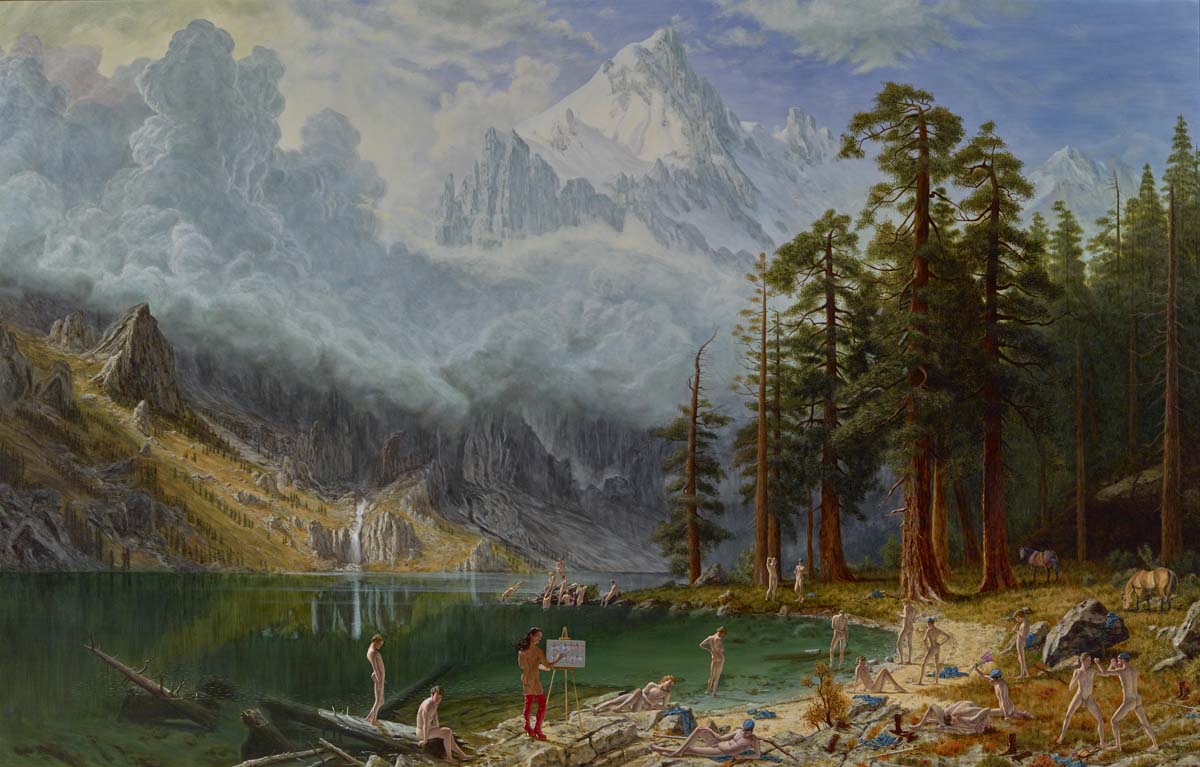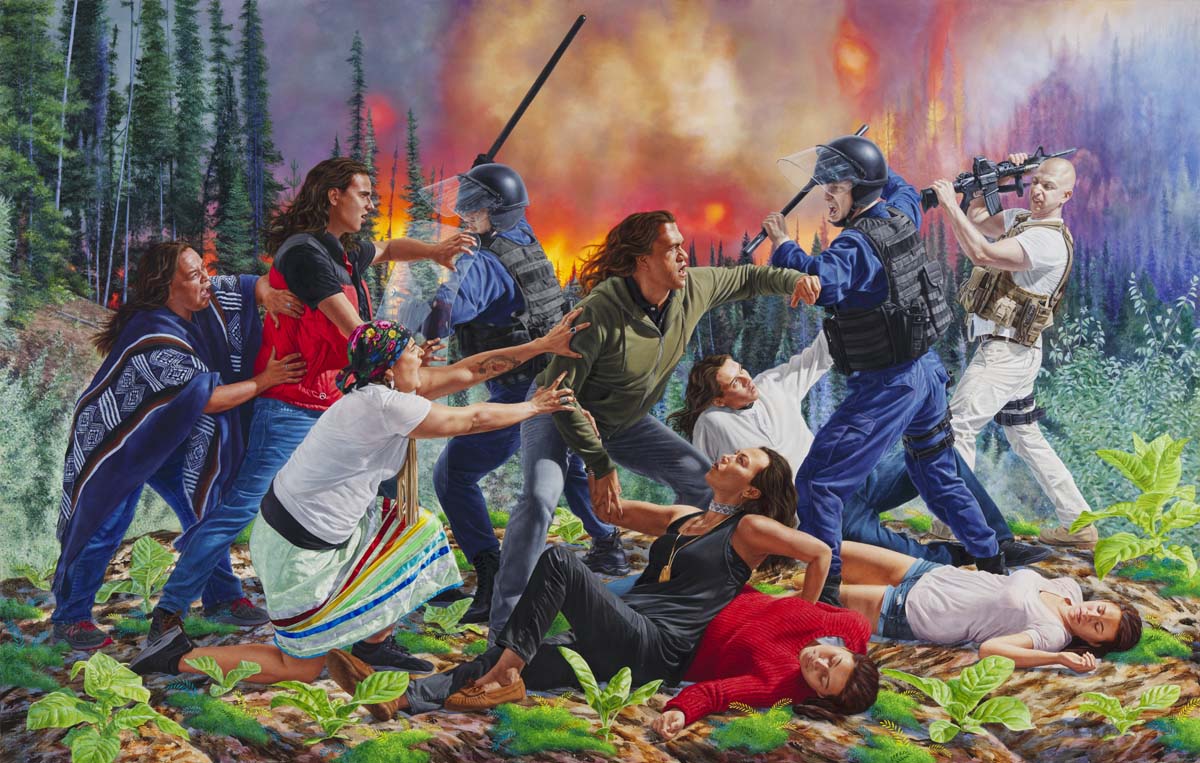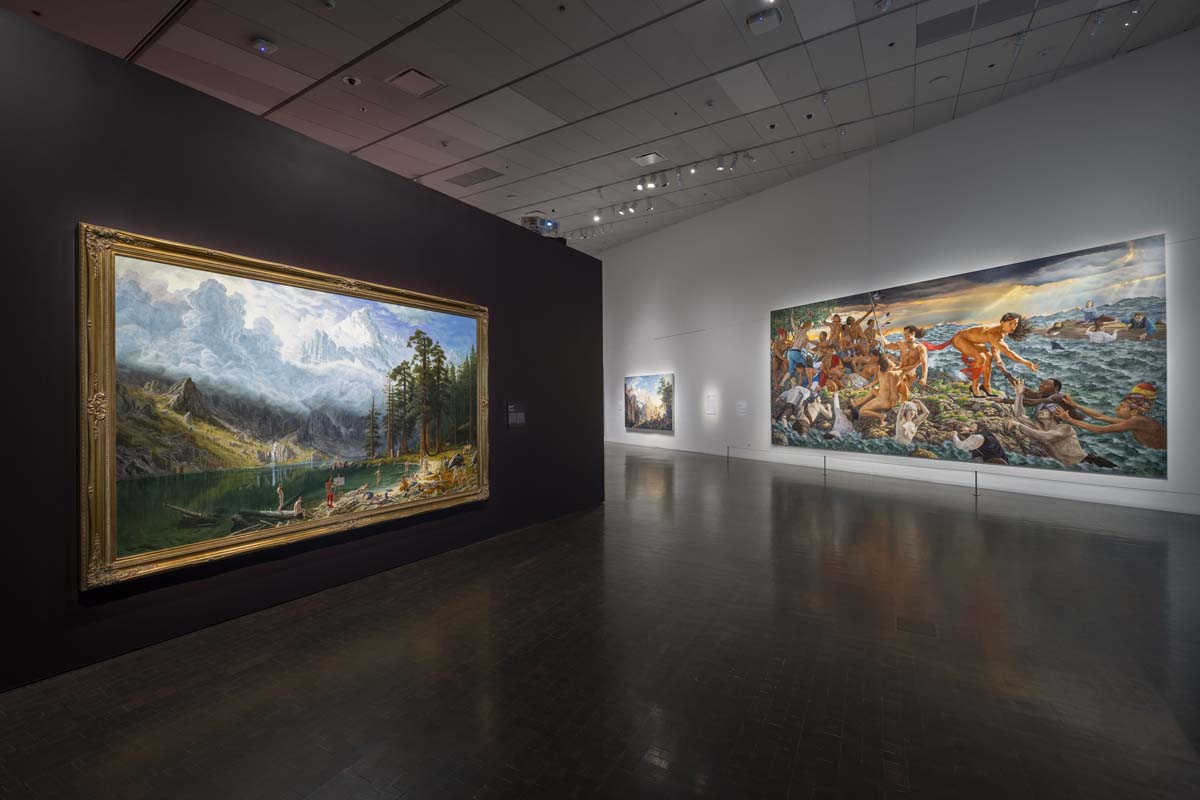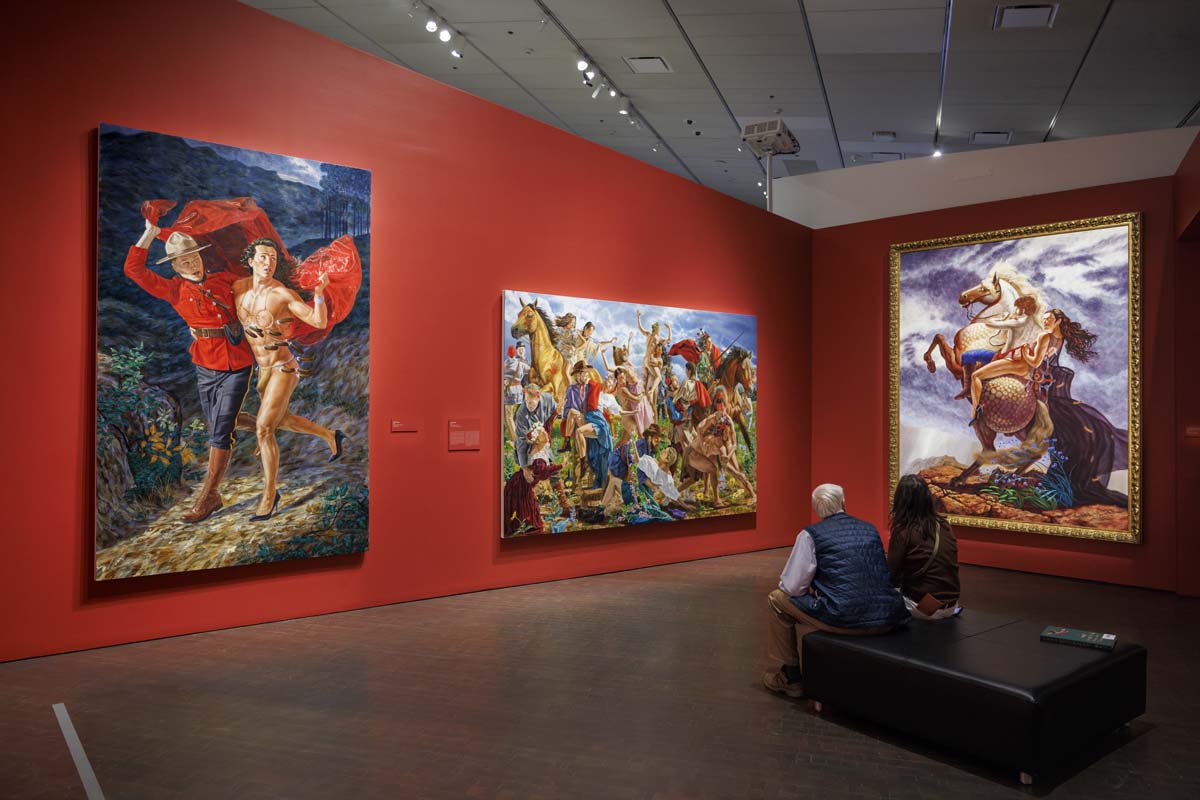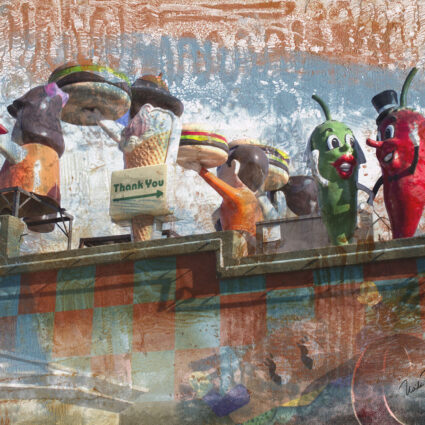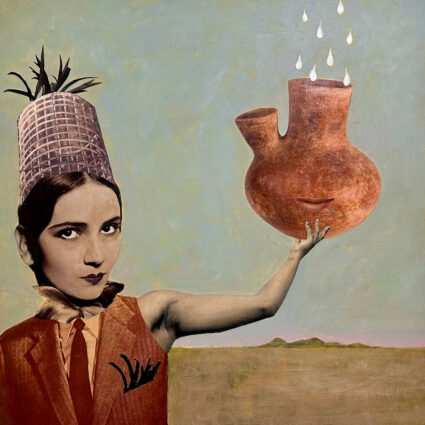Kent Monkman’s exhibition at the Denver Art Museum is a provocative survey that champions the marginalized while subverting history.

Kent Monkman: History is Painted by the Victors
April 20–August 17, 2025
Denver Art Museum
Big, billowy clouds and majestic mountain peaks easily draw awe in Fisher River Cree artist Kent Monkman’s 2013 painting (and 2025 eponymous exhibition) History is Painted by the Victors, curated by DAM’s John Lukavic and Léuli Eshrāghi (Seumanutafa and Tautua Sāmoan) of the Montreal Museum of Fine Arts. Shock follows, though, in a frolicking scene of naked male soldiers being painted en plein air by the artist’s queer protagonist, Miss Chief Eagle Testickle. Donning bright red high heels (and little else), the character guides us through the artist’s anything-but-traditional history paintings.
Subverting recorded history and art history while tackling themes of nature, sexuality, and the struggles of marginalized communities (Indigenous peoples, immigrants, queer folk, women) against oppressive governmental powers, Monkman’s first major exhibition in the U.S. is a neo-Romantic, provocative, and stunning survey that’s sure to inspire both clutching of pearls and hearts.
In Resurgence of the People (2019), for instance, Miss Chief Eagle Testickle leads an overloaded boat through choppy waters, filled with her people and taking on more, while rowing past an island of enraged, gun-toting lawmen. The life-sized scale of the work invites viewers into the dramatic and harrowing scene to wonder if and when the boat of the oppressed will capsize and who can and will save them.
Saturnalia (2017) meanwhile depicts a humorous, anything-goes orgy of love, lust, and violence during frontier times. Soap-operatic and campy in its clash of cowboy hats and flower garlands, the bacchanalian and carnal painting is a delirious celebration of role reversals and cheeky abandonment of social norms.
I’ve heard “monumental” often used to describe this show, and rightly so. But its sheer bigness becomes overwrought at times, threatening to overshadow the message. The past and current struggles of the oppressed are real, but they’re complicated, not caricatures (as Monkman presents them), and they aren’t usually so beautiful and well-composed. Many of the works are painfully relevant, though, especially considering recent news of brutal ICE raids in immigrant communities and Trump’s administrative war against DEI policies.
Balancing sadness and distress with humor and an overarching message of love and acceptance, Monkman paints his own versions of history—riding the line between grand and grandiose—and shares the spoils with the oppressed.
